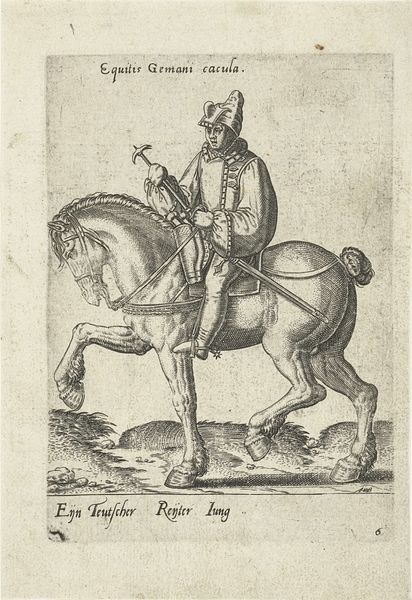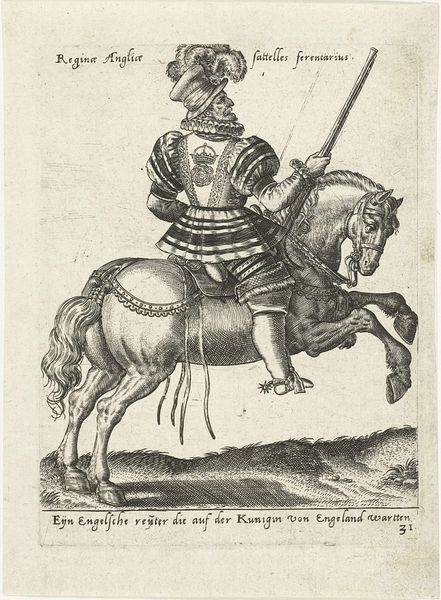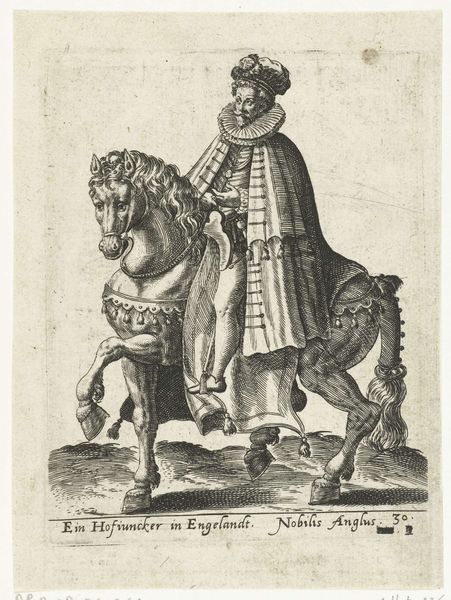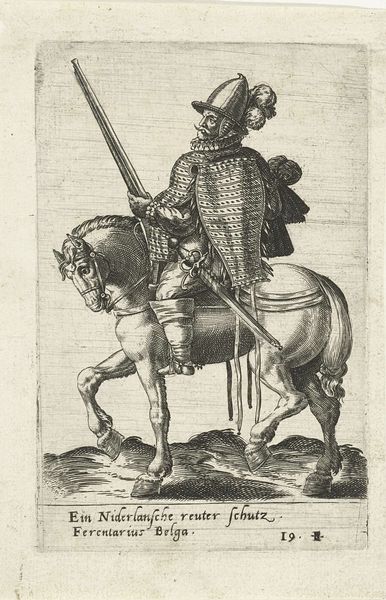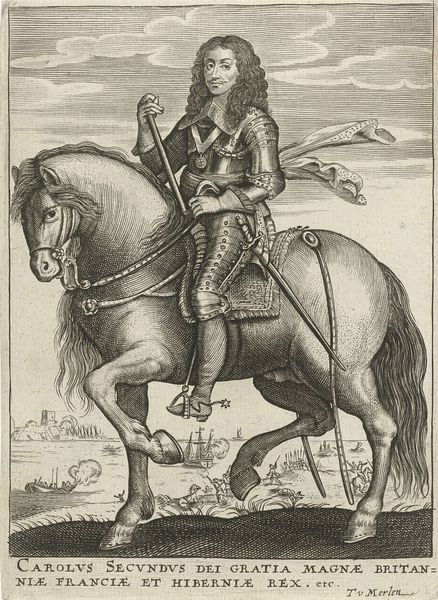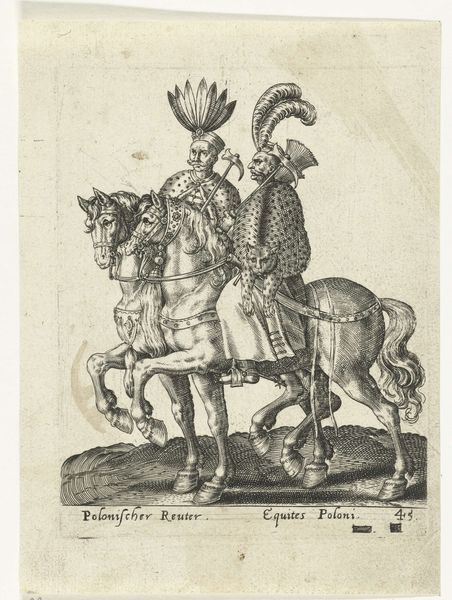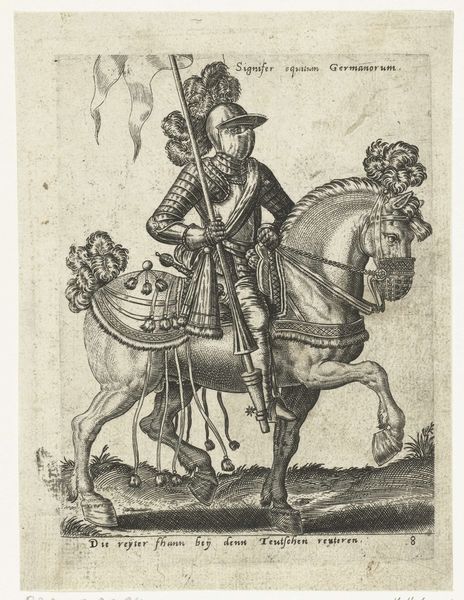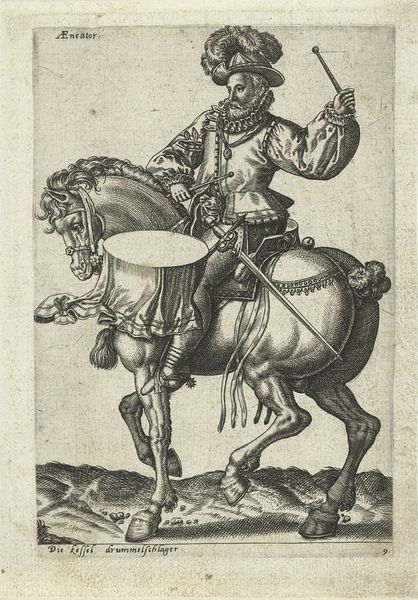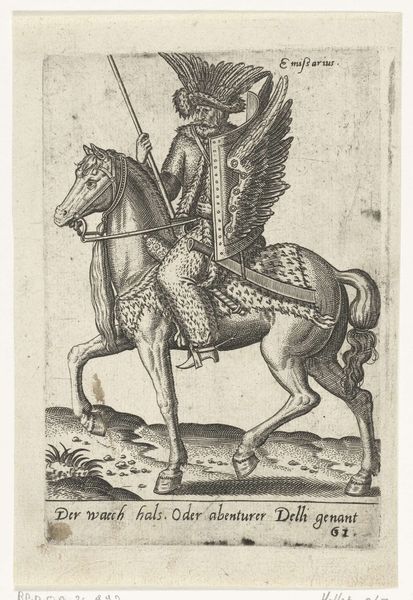
Dimensions: height 138 mm, width 110 mm
Copyright: Rijks Museum: Open Domain
Curator: Let’s turn our attention to "German Rider" or "Duitse Ruiter," an engraving by Abraham de Bruyn, dating back to 1577, and currently held in the Rijksmuseum. Editor: Immediately, I’m struck by the intricate line work; it’s incredible how much detail is packed into a relatively small space. The texture on the horse alone is masterful. Curator: Indeed, the medium allows for such precision. It's not just the detail but what that detail conveys. We see here a representation, a portrait almost, of a particular kind of soldier. The title itself, “German Rider in his clothing”, makes this clear. It’s intended to be ethnographic, demonstrating military fashion of the time. Editor: And consider the composition—the rider and his horse dominate the frame, yes, but the artist also focuses intensely on elements like the feathered hat, the pleated doublet, the decorated saddle, the spurs... They almost demand their own separate studies. Curator: It's a period deeply embroiled in religious conflict, and military imagery was used extensively for propaganda purposes. This wasn’t merely art for art's sake, it played a role in constructing identities and influencing perceptions of power. This print, while depicting a soldier, likely circulated among a specific audience. It might have appealed to collectors of costume books or military enthusiasts of the day. Editor: You know, the way the rider’s body twists, almost posing for the viewer, contrasts sharply with the dynamic forward motion suggested by the horse's raised forelegs. This juxtaposition creates an intriguing tension in the image. And consider the artist's understanding of form... even though it's a relatively flat engraving, there's a definite sense of volume. Curator: Absolutely. Seeing such pieces reminds us that the visual language of the 16th century was deeply enmeshed in the politics and social dynamics of its time. This image captures a fragment of that complex interplay. Editor: Precisely. De Bruyn’s detailed depiction invites us to appreciate both the artistic technique and the deeper meanings embedded in even what appears to be a straightforward representation.
Comments
No comments
Be the first to comment and join the conversation on the ultimate creative platform.
